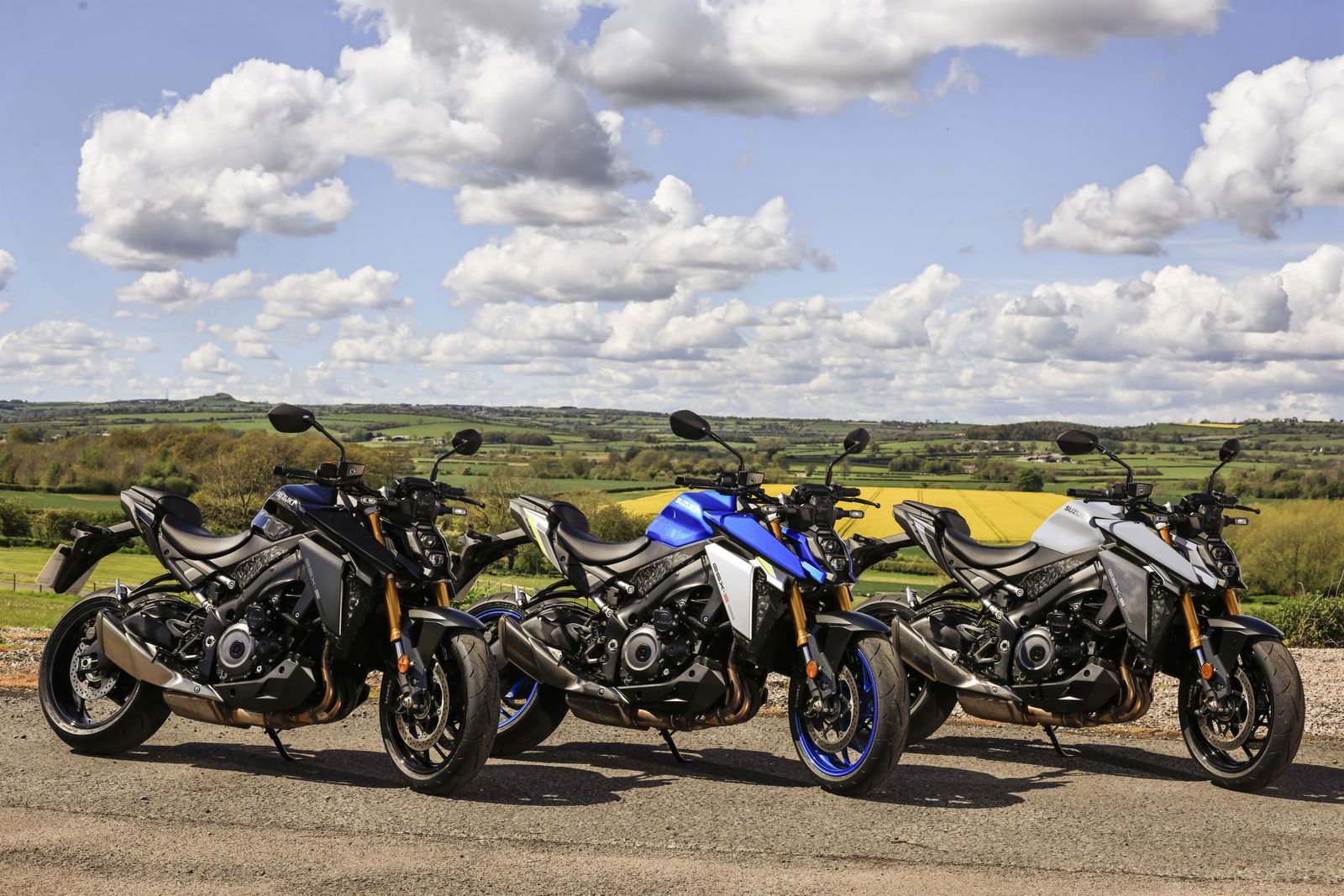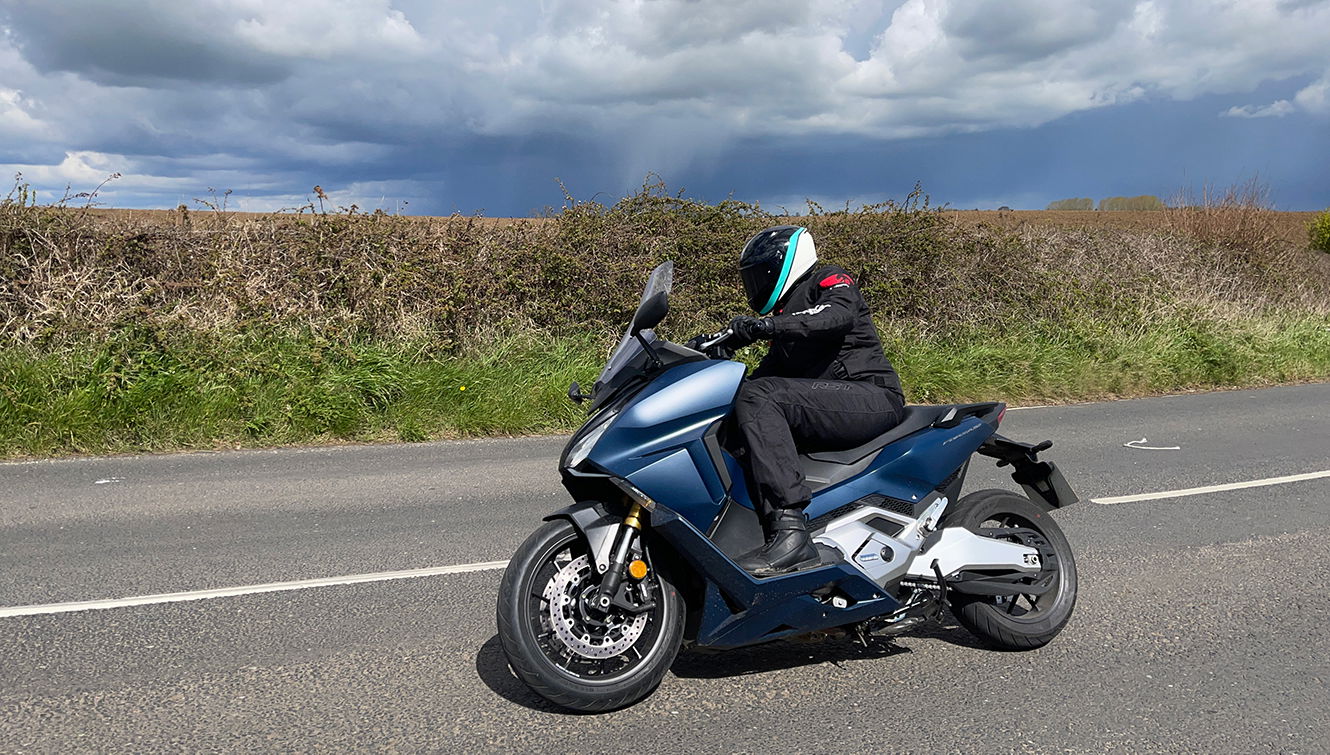2021 Suzuki GSX-S1000 road and track test and review
To find out what the newly updated 2021 Suzuki GSX-S1000 was like to ride, we went to Yorkshire for a track and road test
.jpg?width=1600&aspect_ratio=16:9)
2021 Suzuki GSX-S1000 | £10,999 + OTR | 150bhp | 214kg (kerb weight)
JOINING a burgeoning 1,000cc naked class, the original 2015 GSX-S1000 took the Hamamatsu factory into what is now one of the most competitive classes in the performance motorcycle sector.
Little changed since then, the big GSX has been a stable but not stellar seller for the Japanese giant.
New SUZUKI GSX-S1000 2021 Review
To try and make the 2021 version of the bike a more palatable option, a complete restyle was needed, along with subtle but important updates inside and out. To find out how the new bike performed, we set off to Harrogate in Yorkshire, for a track test on the technical Harewood Speed Hill Climb, and a road test across the North Yorkshire moors.

2021 Suzuki GSX-S1000 price, colours, and availability
Priced at £10,999 (plus OTR charges), the new 2021 Suzuki GSX-S1000 is still one of the best value 1,000cc nakeds on the market. Despite the restyle, Euro5 engine, and increase in tech, the new GSX-S only comes in a smidgen more than the outgoing model. That means the new bike is still one of the best value nakeds on the market. It’s a tad more than the Kawasaki Z1000 and significantly less than the Yamaha MT-10. Look further up the order and the GSX-S is around £10,000 less than the Ducati Streetfighter V4 S – once OTR charges are added. But is it 10 grand less of a bike?
The new 2021 Suzuki GSX-S1000 is available in three colour options, Metallic Triton Blue (as ridden), Glass Mat Mechanical Grey (above right), and Glass Sparkle Black (above left). The new bike should be landing in UK dealerships in June 2021.
.jpg?width=1600)
2021 Suzuki GSX-S1000 engine and gearbox
Obviously, the big job to sort for 2021 was the Euro5 emissions certification, although Suzuki sensibly took the opportunity to give the GSX-R 1000-derived unit a thorough spruce up too. New cams feature reduced lift and overlap to help emissions and make the bike more refined at real-world speeds. The exhaust system has been updated, along with a new airbox, throttle bodies and more.
The changes may be small in size but there is lots going on here, and it is felt when you get on the new 2021 bike. It’s always been revered as having a thumping mid-range spread, although as the chart below shows, its delivery was far from perfect. The new bike is much improved, with a ride-by-wire throttle highlighting the bike’s beautifully linear delivery.
.jpg?width=1600)
Another welcome change for this year is the inclusion of an extra two horses to the Suzuki stable. It’s a minimal increase and one that admittedly I couldn’t feel on the wet press ride, but while many manufacturers are finding it hard to match Euro4 levels of power with new bikes, seeing Suzuki buck the trend is very positive.
The gearbox of the 2021 Suzuki GSX-S1000 is largely the same as the previous machine although with the inclusion of an assisted slipper clutch and a very sweet quickshifter. It’s a tale of two halves here, while the A&S clutch did make mincemeat of aggressive downshifts on the road ride, it didn’t seem to make the clutch feel very light at all. It’s not overly heavy but takes a three-finger squeeze of the non-adjustable lever. In stop-start traffic, that can become tiresome.
No such grumbles with the quickshifter system though. It’s a joyous thing to use, changing gear slickly and precisely and, more impressively, at any speed. It really is as good around town as it is hammering down your favourite B-road.
.jpg?width=1600)
Electronics
The 2021 Suzuki GSX-S1000 utilises the Suzuki Intelligent Ride Systems (SIRS) which is the umbrella that covers the Suzuki Drive Mode Selector (SDMS), and Suzuki Traction Control System (STCS). The SDMS has three flavours, A, B, and C, with A being most aggressive, B being a middle ground, and C being the softest and best suited to wet conditions. Each provides the same peak power just with a progressively more aggressive delivery. The STCS has five levels of intervention, from 1, least intrusive, to 5 most intrusive, plus off. All of the riding modes are changes on the uncluttered left-hand switch cube and can be done on the fly with a closed or static throttle.
.jpg?width=1600)
To get to grips with the SIRS system, I started off riding on Harewood’s narrow and twisty hillclimb in the most intrusive levels selected for both the SDMS and STCS. From there I gradually wound down the intervention levels to notice the difference. The most noticeable change is when changing the SDMS. In A the throttle is pin-sharp, almost too sharp for the narrow track. B was an acceptable middle ground for the conditions, while C made the engine feel lazy down low and allowed you to pin the throttle from very slow speed and the bike would just pick up speed slowly.
We did manage some dry riding on the road in the morning, and while the most dynamic throttle map felt fine on the wider more flowing roads, I found myself preferring B as it made the act of riding the bike much less frantic and more refined. Naturally, when the heavens opened, I slotted the SDMS into C and cranked the TC up a little.
.jpg?width=1600)
2021 Suzuki GSX-S1000 suspension, brakes, and handling
The KYB hardware on the new 2021 bike is the same as before although now with adjusted settings for the new bike. The changes have been made mainly to accommodate the new Dunlop Roadsport 2 hoops (replacing the D214s of before), while also making new bike shaper steering and nimbler than before. The forks feature adjustable damping, rebound, compression, and spring preload, while the link-type rear shock includes adjustable rebound damping and spring preload.
.jpg?width=1600)
The set-up on the GSX isn’t as classy or premium-feeling as some of its peers, but you had to work really hard to make it feel like it was out of its depths. It’s a bike that’s as happy when being grab by the scruff of the neck and forced around corners as it is as the more fast and flowing stuff. Feedback from the road is good and Dunlop should really get a notable mention as the wet and dry grip from the updated Roadsport 2s was extremely good.
.jpg?width=1600)
The only point during the day that highlighted any suspension shortcomings was at the quick left to right chicane at Harewood. It’s an unnaturally fast change of direction that you will never encounter on the road, but just as the bike reached vertical before tipping into the left, the steering would go light, and the bike would then feel a bit nervy for the rest of the right-hander. As I said, it’s not a corner combination you’ll encounter on the road (not at this size and acute angle anyway) so probably not something you’ll easily pick up on.
.jpg?width=1600)
Braking is provided by the same 4-piston Brembo calipers as before which are matched to 310mm discs and governed by a conventional 2-channel ABS system. It’s a non-switchable setup meaning it is always on, and on the circuit in the morning, I did have a moment when the ABS felt overly intrusive. Looking back, it was a downhill braking zone from motorway speeds down to around 45mph and I think the ABS was detecting the rear lifting and causing the ABS to cut in a little too eagerly. It’s a shame as it did knock my confidence a little and would be something easily fixed by including a cornering ABS system that could monitor the bike a little more precisely to differentiate between lifting and locking.
ABS aside, the brakes on the 2021 machine feel strong, and while they conventionally mounted, the non-radial master cylinder may lack the sophisticated feel of a more premium machine, on the road later in the day it never once hampered my progress.
.jpg?width=1600)
What we like about the 2021 Suzuki GSX-S1000:
- SIRS – easy and intuitive to use
- Wet and dry handling is excellent
- Comfortable enough to cover big miles all-day
- Quickshifter system works flawlessly
What we don’t like:
- Clutch feels fairly hefty – despite A&S function
- ABS was overly intrusive and can’t be altered
- No IMU
.jpg?width=1600)
2021 Suzuki GSX-S1000 Verdict
While some may say that Suzuki’s big updates for 2021 (the GSX-S1000 and new Hayabusa) are lazy updates that don’t go far enough, I think Suzuki has proven that you don’t need to completely redesign a bike to keep it competitive. While it’s true that Suzuki is more economical with its model revisions, it does keep the Japanese giant’s bikes in touch with a massive number of riders, many of whom can’t afford to be parking £20,000 worth of unobtanium in their garage.
While that does mean it will sit in the shadow of some of the super naked motorcycles that are available, out on the roads of the UK and Europe, you won’t be thinking about that, you’ll be revelling in the midrange grunt and bathing in a sea of induction howl.
.jpg?width=1600)
Granted, the re-style for the 2021 bike isn’t to everyone’s taste, and while it is a massive departure for the GSX range, you can’t blame Suzuki for trying something new. And as I found out when I first saw the bike in the flesh, it’s much easier on the eye in real life than it is on a computer screen.
Would I have liked to see some higher-spec electronics, borrowed from a GSX-R1000? Maybe. Doing that would have elevated the GSX-S massively, although its competitive price would have been negatively affected.
For more information on the updated 2021 Suzuki GSX-S1000, head to: www.Suzuki.co.uk
.jpg?width=1600)
2021 Suzuki GSX-S1000 specs
Overall length | 2,115mm |
Overall width | 810mm |
Overall height | 1,080mm |
Wheelbase | 1,460mm |
Ground clearance | 140mm |
Seat height | 810mm |
Kerb weight | 214kg |
Engine type | Four-stroke, four-cylinder, liquid-cooled, DOHC |
Bore x stroke | 73.4mm x 59.0mm |
Engine displacement | 999cc |
Peak power | 152PS @ 11,000rpm |
Peak torque | 106N-m/9,250rpm |
Compression ratio | 12.2 : 1 |
Fuel system | Fuel injection |
Starter system | Electric |
Lubrication system | Wet sump |
Transmission | Six-speed constant mesh |
Suspension front | Inverted telescopic, coil spring, oil damped |
Suspension rear | Link type, coil spring, oil damped |
Rake / trail | 25° / 100mm |
Brakes – front | Disc, twin Brakes – |
Brakes rear | Disc |
Tyres – front | 120/70ZR17M/C (58W), tubeless Tyres - rear 190/50ZR17M/C (73W), tubeless |
Ignition system | Electronic ignition (transistorised) |
Fuel tank capacity | 19 litres |
Fuel efficiency | / range 46.3mpg / 194 miles |
Oil capacity | (overhaul) 3.4 litres |

.jpg?width=1600)
